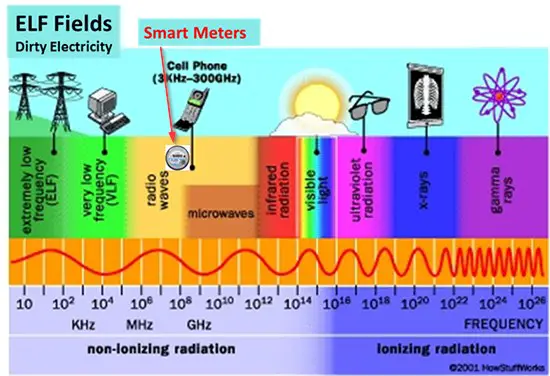Coinage refers to the process of manufacturing and issuing coins, which are metallic forms of currency typically used in everyday transactions. The primary function of coinage is to serve as a medium of exchange, facilitating trade by providing a standardized and universally accepted unit of value. Coins are tangible representations of a nation’s currency and are often issued by government authorities or central banks. The key facts surrounding coinage include the utilization of durable materials such as metal alloys to ensure longevity and resistance to wear. Coins commonly feature engravings or embossments, including national symbols, leaders, or historical motifs, reflecting the cultural and historical identity of the issuing entity. Coinage plays a crucial role in the monetary system by complementing paper currency and digital transactions, offering a physical means of conducting transactions. Furthermore, coins contribute to economic stability by providing smaller denominations suitable for daily transactions, reducing the need for cumbersome barter systems. They also play a role in discouraging counterfeiting due to their distinctive designs and security features. In summary, the facts and functions of coinage encompass its role as a durable, standardized medium of exchange, reflecting cultural identity and contributing to economic stability through its integration into monetary systems.
Facts of Coinage
In the vast tapestry of human history, coinage stands as a tangible testament to the evolution of civilizations and the intricacies of trade and commerce. From the earliest metal disks to the intricately designed pieces of currency we use today, the journey of coinage is a fascinating exploration of human ingenuity and societal progress. This article aims to delve into the facts surrounding coinage, tracing its origins, development, and the role it plays in the modern world.
1. Origins of Coinage
The concept of coinage didn’t emerge overnight; rather, it evolved over time. The earliest known coins date back to the 7th century BCE in Lydia, a region in present-day Turkey. These coins were made of a naturally occurring alloy called electrum, a mix of gold and silver. The Lydians, under King Alyattes, are credited with introducing the first standardized coinage system, paving the way for the widespread use of currency. As we move forward in time, we encounter the Roman Empire, a civilization that significantly influenced the development of coinage. The Romans introduced minting on a large scale, producing coins with intricate designs and detailed portraits of emperors. The spread of the Roman Empire facilitated the dissemination of coinage throughout Europe and beyond.
2. Evolution of Coin Designs
One of the most intriguing aspects of coinage is its role as a canvas for artistic expression. Throughout history, coins have featured a myriad of designs, ranging from symbolic representations of rulers and deities to intricate depictions of cultural symbols. The Greek city-states, for example, were known for their artistic prowess, and this was reflected in the coins they minted. Each city-state had its own unique designs, showcasing a blend of mythology, politics, and aesthetics. In the modern era, countries continue to use coins as a means of artistic expression. National symbols, historical figures, and cultural motifs adorn the faces of coins, providing a snapshot of a nation’s identity. The intricate design process involves collaboration between artists, historians, and government officials, ensuring that each coin tells a story that resonates with the nation it represents.
3. Materials and Minting Techniques
The materials used in coinage have evolved over the centuries, from the early use of precious metals like gold and silver to the more common metals such as copper and nickel in modern times. The choice of materials is often influenced by economic factors, as well as the intended use of the coins. Some currencies, like the Euro, use a combination of metals to achieve durability, cost-effectiveness, and aesthetic appeal. Minting techniques have also seen significant advancements. In ancient times, coins were often struck by hand using hammer and anvil. Today, mints utilize sophisticated machinery to produce coins with precision and consistency. The minting process involves the creation of dies, which are used to imprint the design onto metal blanks. The efficiency of modern minting allows for the production of large quantities of coins with intricate designs in a relatively short period.
4. Numismatics: The Study of Coins
Numismatics, the study of coins, provides valuable insights into the history, culture, and economics of different periods. Numismatists analyze coins not only for their artistic value but also for the information they convey about the society that produced them. The study of coin inscriptions, images, and minting techniques helps historians piece together the puzzle of the past. Coin collecting, a popular hobby around the world, falls under the umbrella of numismatics. Collectors seek out rare coins, historical pieces, or those with unique features. The value of a coin can be influenced by factors such as rarity, condition, historical significance, and demand among collectors. The world of numismatics is a dynamic and ever-evolving field, with new discoveries and research continually expanding our understanding of coins and their role in history.
5. Economic Impact of Coinage
The introduction of standardized coinage revolutionized trade and commerce by providing a universally accepted medium of exchange. As economies grew more complex, so did the role of coins. They became a symbol of a nation’s economic stability and power. Governments often use coinage as a tool to manage inflation, control the money supply, and foster economic growth. In recent years, the rise of digital currencies and cashless transactions has raised questions about the future of physical coins. Some countries have embraced the idea of a cashless society, while others continue to value the tangible nature of coins. The economic impact of coinage extends beyond its face value; it is embedded in the cultural and historical identity of nations.
6. Challenges in Coinage
Despite their enduring popularity, coins face challenges in the modern era. Counterfeiting, for example, has become more sophisticated with advancements in technology. Governments and mints employ various security features, such as holograms and microprinting, to combat counterfeiting. The transition to digital currencies also poses a challenge to traditional coinage, raising questions about the relevance and future of physical currency. Environmental concerns related to metal mining and coin production have prompted some countries to explore alternative materials or even consider transitioning to entirely digital currencies. The ongoing debate about the future of coinage reflects the dynamic nature of our economic and technological landscape.
7. Unusual and Rare Coins
The world of coinage is not without its share of oddities and rarities. Unusual coins, whether due to design errors, limited production, or historical quirks, capture the imagination of collectors and enthusiasts alike. Some coins feature intriguing shapes, while others have unique features that set them apart from the standard. Rare coins, often with limited mintages or historical significance, can fetch high prices at auctions and among collectors. The allure of owning a piece of history, whether it’s an ancient coin from a long-lost civilization or a rare modern coin with a printing error, adds a layer of excitement to the world of numismatics.
Coinage, with its rich history and multifaceted significance, continues to play a vital role in our global society. From its humble beginnings in Lydia to the complex economies of the present day, coins have been witnesses to the rise and fall of civilizations, the ebb and flow of trade, and the artistic expression of cultures worldwide. As we navigate an increasingly digital future, the enduring appeal of physical coins invites us to reflect on the tangible connections they provide to our shared human history. Whether in the hands of a collector, a historian, or an everyday consumer, coins remain a tangible link to our past and a fascinating subject worthy of exploration and appreciation.
Functions of Coinage
Coinage, as a fundamental aspect of monetary systems, has evolved over millennia, adapting to the changing needs and complexities of societies. In this comprehensive exploration, we delve into the multifaceted functions of coinage, from its historical roots to its contemporary manifestations. By examining the roles of coinage in economic, social, and political spheres, we aim to unravel the intricate dance that coins perform in the modern world.
1. Introduction
The concept of coinage traces its origins to ancient civilizations, where it emerged as a pivotal tool for trade and commerce. As societies progressed, so did the functions of coins, extending beyond mere mediums of exchange. In this article, we embark on a journey through time and economies to understand the diverse roles that coinage plays in the contemporary world.
2. Historical Evolution of Coinage
To comprehend the functions of coinage today, it’s crucial to trace its historical evolution. We explore the earliest forms of money, from commodity money to the advent of metal coins. The shift from barter systems to standardized currency marked a revolutionary leap in human economic interactions. By examining key milestones, such as the Lydian lion coins and Roman denarii, we gain insights into how early civilizations laid the groundwork for the functions we see today.
3. Medium of Exchange: The Foundation
One of the primary functions of coinage is serving as a medium of exchange. In this section, we dissect the mechanics of how coins facilitate transactions, examining their role in reducing transaction costs, fostering economic efficiency, and promoting specialization. We also investigate the impact of digital currencies on the traditional functions of coinage, addressing questions about the future of physical currency.
4. Unit of Account: Coins as Measures of Value
Coins, as units of account, provide a standardized measure of value, enabling individuals and businesses to assess prices and make informed economic decisions. We explore the psychological and practical aspects of coins as units of account, shedding light on their influence on consumer behavior and economic stability.
5. Store of Value: Stability and Trust
The function of coins as a store of value is integral to the stability of economies. We scrutinize the historical and contemporary challenges faced by coins in maintaining their value, including inflation, counterfeiting, and the rise of alternative stores of value. Gold and precious metals, historically associated with coins, also take center stage in this discussion.
6. Economic Stability and Monetary Policy
Coins play a pivotal role in the broader context of economic stability and monetary policy. Through a detailed analysis, we explore how central banks and governments leverage coinage as a tool for managing inflation, controlling money supply, and influencing interest rates. The symbiotic relationship between coins and monetary policy is dissected to reveal its profound implications on economic health.
7. Social Functions: Beyond Economics
Beyond their economic roles, coins have significant social functions. We investigate how coins contribute to cultural identity, artistic expression, and national pride. Case studies from diverse cultures illuminate the symbolic power of coins and their impact on societal narratives.
8. Political Implications: Coins as Instruments of Power
Coins have long been used as instruments of power and propaganda. In this section, we delve into the political dimensions of coinage, exploring how rulers and governments have employed coins to assert authority, communicate ideologies, and shape public perception. The evolving relationship between coins and politics, especially in the era of digital currencies, is a focal point of analysis.
9. Technological Disruptions and the Future of Coinage
The advent of blockchain technology and cryptocurrencies introduces new dimensions to the functions of coinage. We examine the potential disruptions and innovations that digital currencies bring to traditional coinage, considering their impact on financial inclusion, privacy, and the broader financial landscape.
10. The Ever-Changing Landscape of Coinage
The functions of coinage are far from static; they evolve in tandem with technological advancements, economic shifts, and societal changes. By unraveling the intricate dance of coinage, we gain a profound understanding of its dynamic role in shaping the modern world. As we navigate the complex interplay of economic, social, and political forces, one thing remains clear—coins, in all their forms, continue to be fundamental to the fabric of human civilization.
Conclusion
The role and significance of coinage are deeply rooted in both historical and functional contexts. Throughout human history, coins have served as tangible markers of economic transactions, symbolizing societal advancements and facilitating trade. The evolution of coinage reflects the development of civilizations, as well as shifts in economic systems and political structures. From ancient times to the modern era, coins have not only functioned as a medium of exchange but have also conveyed cultural and political messages through their design and inscriptions. The facts surrounding coinage highlight its dual nature as both a practical tool for commerce and a cultural artifact that transcends its utilitarian purpose. As societies have progressed, the technology and materials used in coin production have evolved, yet the fundamental functions of coins persist. They continue to play a vital role in fostering economic stability, promoting national identity, and preserving historical narratives. In contemporary times, digital currencies are challenging traditional coinage systems, but physical coins endure as tangible representations of economic value. The facts and functions of coinage underscore its enduring importance as a fundamental element in the tapestry of human civilization, connecting the past with the present and shaping the trajectory of economic and cultural landscapes.







Leave a Reply